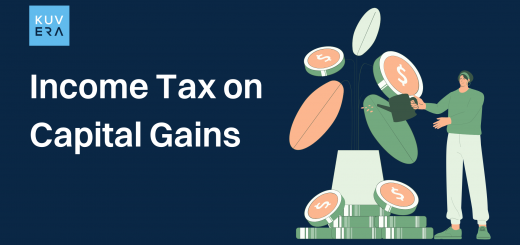If you are new at investing, Index Funds are your best choice. Why you ask? First, no hassle of tracking the market. Second, no need to rebalance your portfolio all the time. Wealth creation is no longer for just finance professionals.
Want to know more about Index Funds? Click here.
Let’s take Vinayak’s case.
Vinayak B, 30, has always struggled with saving money since he started earning. Weekends are for long drives and eating out with friends and family. In addition to the usual banter when hanging out with his friends, he often finds them discussing stock markets and one friend bragging about multibagger stocks. These conversations have gotten Vinayak interested in investing in the stock market. After playing with a few stocks here and there, Vinayak decided that tracking daily movements was not his cup of tea. He moved to investments in mutual funds after learning the basics of stocks on social media.
Many Indians like Vinayak are now regularly investing in the stock market through the mutual fund route. The preference is for systematic investment plans, popularly known as SIPs. The numbers also speak volumes about this trend. According to the Association of Mutual Funds in India (AMFI), SIP accounts hit a high of 8.7 crore by April 2024, and the money invested is on the rise. There has been a tectonic shift in the way Indians are saving since the COVID-19 pandemic. Gone are the days when bank deposits were the first choice for savings. Rapid digitisation with the advent of UPI, e-KYC, etc., along with wealth management platforms like Kuvera, has made it simple and easy for investors to make mutual fund investments.
While there is heightened interest, investors are often confused about which MF scheme to choose from the hundreds available in the market. For first-time investors, selecting schemes that are not aligned with their goals may turn out to be counterproductive. Understanding suitable schemes that align with your goals is not an easy task.
Set a goal now!
But there is no need to worry. A passive style of investment can help you in wealth creation without worrying about market volatility and other such risks.
Before understanding the passive style of investment for wealth creation, let’s understand passive vs. active investments. Under an active style, fund managers buy and sell stocks based on their expertise, in-depth research, economic trends, and the future potential of certain companies. The idea is to find stocks that are available at cheaper valuations but with greater potential for massive returns. Moreover, actively managed funds aim to generate higher returns than benchmark indices. However, these schemes also have higher expense ratios, which can potentially lower the returns of investors.
Passive style, on the other hand, is simple and easy to understand. It is almost like a DIY (do-it-yourself) investment and hence it is increasingly gaining popularity among investors. Investors just need to select a bunch of index funds, without having to spend time worrying about scheme selection or reviewing portfolios every now and then, especially during times of market volatility. On Kuvera, details like expense ratio, fund performance, etc., are available for you to read before investing.
Ace investor Warren Buffet once famously said: “By periodically investing in an index fund, for example, the know-nothing investor can actually outperform most investment professionals. Paradoxically, when ‘dumb’ money acknowledges its limitations, it ceases to be dumb.”
Passive funds are broadly of two types: index funds and exchange-traded funds. Simply put, these funds follow a particular index. For instance, an index fund based on India’s benchmark index Nifty 50 will invest in stocks that are part of the index. The allocation to each stock will also be replicated based on the weightage of the company in that particular index.
Advantages of Passive Investment with Index Funds:
- Diversification
As discussed above, passive funds will follow a particular index, which is made up of different stocks. For example, by investing in Nifty 50 based index funds, investors will get exposure to the top 50 companies of India spanning various sectors such as banking, infrastructure, automobile, fast-moving consumer goods, etc. Usually, top-quality companies and sector leaders are part of the index. Diversification is an essential risk-mitigating strategy. By choosing a passive fund, investors will get exposure to various companies and sectors, thereby reducing risks that may come from putting all your money in a particular stock or even a sector.
- Steady returns
Since passive funds are all about following the index, the returns are more consistent with the broader market. Compared to actively managed funds, they may not generate higher returns, especially during bull markets. But on the market downside, they don’t underperform benchmarks as much. According to a widely tracked S&P Indices Versus Active Funds report, the S&P BSE 100 gained 23.2% in 2023, and 51.6% of active managers underperformed the benchmark over that period.
- Low cost
Since fund managers don’t have to wear the research hat for stock selection, passive funds have a very low expense ratio and management fees. This helps ensure that investors don’t have to pay higher fees and keep intact the returns made by the scheme.
Top 10 Index Funds Based on 10-year Returns
| Scheme Name | AuM (Cr) | YTD | 1Y | 2Y | 3Y | 5Y | 10Y |
| ICICI Prudential Nifty Next 50 Index Fund – Direct Plan – Growth | 4,909.40 | 30% | 66% | 35% | 23% | 20% | 17% |
| LIC MF Nifty Next 50 Index Fund – Direct Plan – Growth | 80.06 | 30% | 65% | 35% | 23% | 20% | 16% |
| Bandhan Nifty 50 Index Fund – Direct Plan – Growth | 1,219.39 | 6% | 25% | 20% | 16% | 15% | 13% |
| Sundaram Nifty 100 Equal Weight Fund – Direct Plan – Growth | 76.32 | 17% | 48% | 29% | 20% | 19% | 13% |
| UTI Nifty 50 Index Fund – Direct Plan – Growth | 16,695.00 | 6% | 25% | 19% | 15% | 15% | 13% |
| HDFC Index Fund – Direct Plan – Nifty 50 Plan | 13,787.83 | 6% | 25% | 19% | 15% | 15% | 13% |
| ICICI Prudential Nifty 50 Index Fund – Direct Plan – Growth | 8,775.12 | 6% | 25% | 19% | 15% | 15% | 13% |
| Tata Nifty 50 Index Fund – Direct Plan | 700.96 | 6% | 25% | 19% | 15% | 15% | 13% |
| HDFC Index Fund – S&P BSE Sensex Plan – Direct Plan | 6,802.05 | 5% | 22% | 18% | 15% | 15% | 13% |
| Nippon India Index Fund – Direct Plan – Nifty 50 Plan – Growth | 1,631.66 | 6% | 25% | 19% | 15% | 15% | 13% |
Indian savers have come a long way in their investment journey. Investment in the equity market, especially mutual funds, is a common topic for conversations among friends and family members. Kuvera understands the excitement of millennials and Gen-Z investors to start their investment journey. Don’t let financial jargon keep you away from mutual fund investment. Passive funds are easy and simple schemes that will help you in wealth creation. Start a SIP now!
Wish to know how much to save? Here’s a SIP Calculator.
FAQs
What are SIPs, and why are they popular among Indian investors?
Systematic Investment Plans (SIPs) are a method of investing in mutual funds where investors contribute a fixed amount regularly. They are popular among Indian investors due to their disciplined approach to investing, ease of use, and the benefits of compounding over time. As per AMFI, there were about 8.7 crore SIP accounts in April 2024, and the trend is rising.
What is the main advantage of passive investing compared to active investing?
The main advantage of passive investing is its simplicity and lower cost. Passive investing involves following a set index, which eliminates the need for constant monitoring and research. This style is easy to understand and helps investors avoid market volatility and fund manager biases, offering steady returns with low expense ratios.
What types of passive funds are available, and how do they work?
There are two main types of passive funds: index funds and exchange-traded funds (ETFs). These funds follow a particular index. For example, an index fund based on India’s benchmark index Nifty 50 will invest in stocks that are part of that index, replicating the allocation of each stock based on its weightage in the index.
How do passive funds offer diversification, and why is it important?
Passive funds offer diversification by following an index composed of various stocks across different sectors. For example, a Nifty 50-based index fund gives exposure to the top 50 companies in India across sectors like banking, infrastructure, automobile, and fast-moving consumer goods. Diversification reduces the risk of investing in a single stock or sector, mitigating potential losses.
Interested in how we think about the markets?
Read more: Zen And The Art Of Investing
Watch here: Understanding Index Funds
Start investing through a platform that brings goal planning and investing to your fingertips. Visit kuvera.in to discover Direct Plans and Fixed Deposits and start investing today.












